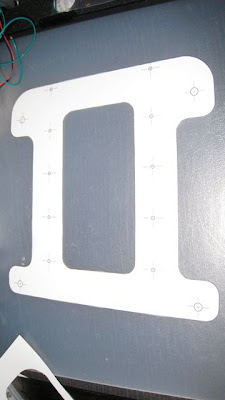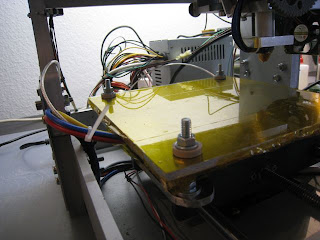So far it was running really good. I tweaked the settings to thinner and thinner layers. But then I started a bigger projects with more than 24 h printing time and ended up with a knotted spool. It took some time to remove around 40 meters and put them back on.
Also I realized that in redsnapper I added one stl-file two times with a small offset. During G-Code generation I havent realized the mistake. And the print ran for about 10 hours adding up double material in many areas.
The output looked like this:
You can see the brown color of the material in the upper and lower area of the part, where the stls overlapped the most. I was supprised, that I did not ruin the nozzle that way.





















































